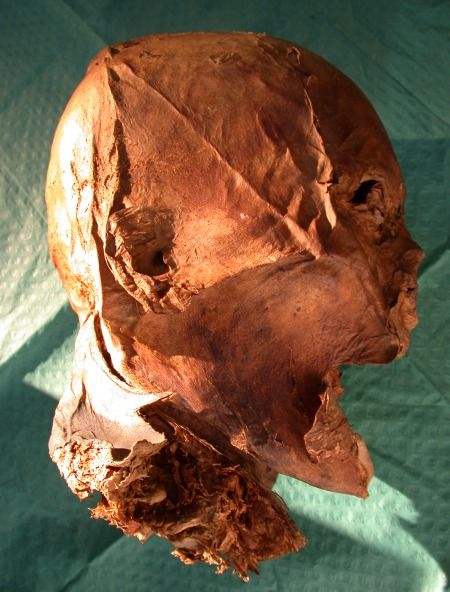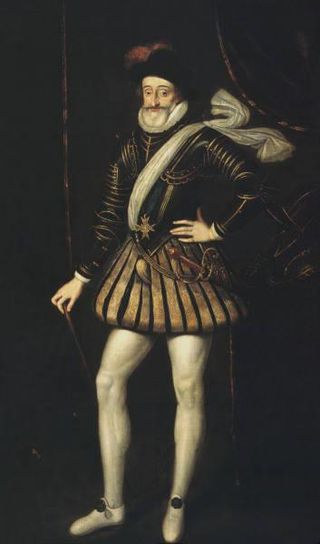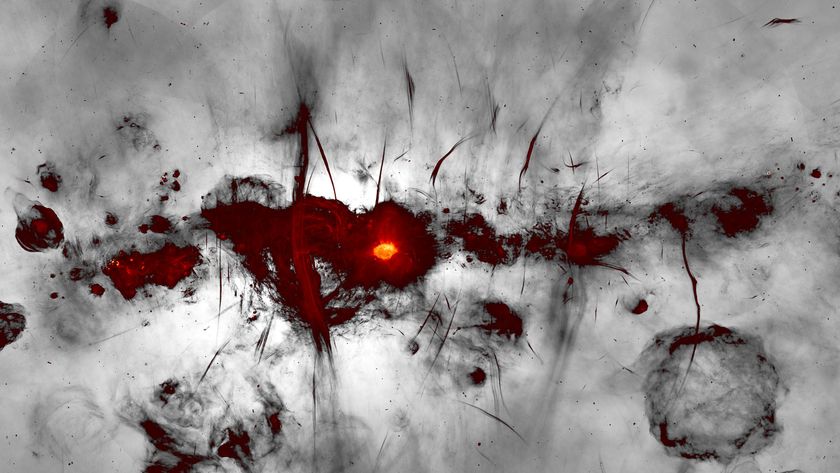Mummified Head May Not Belong to King Henry IV

A mummified head identified as that of the French king Henry IV three years ago may not belong to the monarch after all.
In 2010, researchers used digital facial reconstruction on the head, which had been in the hands of private collectors, to identify it as the "good King Henry," who ruled France from 1589 to 1610. The king, according to historical legend, was exhumed and posthumously beheaded in 1793 during the French Revolution.
A new DNA study throws the original identification into controversy, however. A team led by Jean-Jacques Cassiman of the University of Leuven in Belgium found that DNA recovered from the head does not match that from the House of Bourbon, Henry's lineage.
"In order to realize an accurate genetic identification of historical remains, DNA typing of living persons, who are paternally or maternally related with the presumed donor of the samples, is required," Cassiman and his colleagues wrote Wednesday (Oct. 9) in the European Journal of Human Genetics. [History's 10 Most Overlooked Mysteries]
Testing old DNA is tricky, however, and too little DNA was recovered from the mummified head to entirely rule it out as Henry's, according to Cassiman and his colleagues.
King Henry's head?
King Henry IV was king of the Pyrenees kingdom of Navarre in 1589, when an assassin killed his predecessor, Henry III. As a Protestant, Henry IV's ascension to the throne of Catholic France was complicated; he eventually converted to Catholicism, allegedly saying, "Paris is well worth a Mass."
Sign up for the Live Science daily newsletter now
Get the world’s most fascinating discoveries delivered straight to your inbox.

In 1610, an assassin took Henry IV’s life as well. He was buried in the Basilica of Saint Denis in Paris, but his rest may not have been so eternal. According to some accounts, Henry IV’s grave was among those ransacked in 1793, when French revolutionaries took to mutilating dead monarchs as a statement against royal rule. As the disrupted graves were re-closed in the early 1800s, there’s no way to verify whether Henry IV’s body was beheaded at this time or left alone.
In 2010, osteo-archaeologist Philippe Charlier of University Hospital R Poincaré in Garches, France, and his colleagues reported that a forensic examination of a mummified head said to be Henry IV's was indeed the king's. Among the evidence: The mummy head has an irregular mole on the nostril and a pierced right ear, both features seen on contemporary portraits of Henry IV.
DNA mystery
Cassiman's new analysis failed to confirm Charlier's findings. Using markers on the male, or Y, chromosome, Cassiman and his colleagues found that there was no match between the head's DNA and that of three living descendants of the king. The DNA would have needed to include two "breaks" in the paternal biological line — meaning offspring whose fathers were not actually Bourbons — for the head to belong to Henry IV, the researchers found.
Maternal DNA evidence also suggested the head might not be Henry IV's, the researchers reported. At least one of the women in the king's lineage would have to have not actually been biologically related to her child for the head to be Henry's, the results suggest.
Charlier, the researcher who identified the head as Henry's, is not convinced, arguing that illegitimacy in the family line makes DNA identification difficult.
"It is hopeless to try to match a family tree and a series of genetic links (over) such a long period," he wrote in an email to the news site PhysOrg.
Follow Stephanie Pappas on Twitter and Google+. Follow us @livescience, Facebook & Google+. Original article on LiveScience.

Stephanie Pappas is a contributing writer for Live Science, covering topics ranging from geoscience to archaeology to the human brain and behavior. She was previously a senior writer for Live Science but is now a freelancer based in Denver, Colorado, and regularly contributes to Scientific American and The Monitor, the monthly magazine of the American Psychological Association. Stephanie received a bachelor's degree in psychology from the University of South Carolina and a graduate certificate in science communication from the University of California, Santa Cruz.











